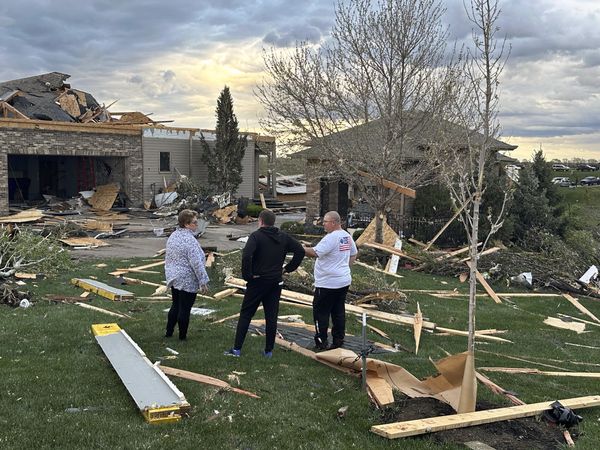
Another year, another Closing the Gap report, another lament of bipartisan failure over so long a period, another expression of hope that things will change soon. It’s now a ritual of the opening weeks of Parliament. It doesn’t matter who’s in government.
Each year the media coverage seems to lessen; this year is particularly paltry. Maybe it’s fatigue after a year dominated by the Voice to Parliament campaign. Who wants to read yet another report on how bad things are among First Nations peoples?
Of course, if people are tired of reading about it, imagine how tired Indigenous peoples are of living it. This report is the third blow in a year, after the colossal wrench of the electorate dismissing them out of hand in the Voice referendum, and the Productivity Commission’s dissection of the failure so far to properly partner with Indigenous communities in policy design and implementation.
That was supposed to be the turning point. It was one of the few good things the Morrison government did: former Indigenous Australians minister Ken Wyatt convincing his colleagues that they had to listen to Indigenous peoples when they said that only programs co-designed and co-implemented by, through and with Indigenous communities would start to make a difference. But the PC’s report card, first flagged last year amid the Voice turmoil and recently confirmed, showed that cooperation had barely started.
Labor’s 2023 report, now combined with the implementation plan for the new approach adopted by the Morrison government, emphasises how it is trying to accelerate that. There’s a focus on how the public service is now being made to formally embed both more reporting and partnership work into business-as-usual. A “Commonwealth partnership and engagement framework” is, inevitably, on the way. More grant funding is finding its way directly to Indigenous groups.
On health, serious money is being directed to expanding the Indigenous health and caring workforce and to providing more health and caring infrastructure. Indigenous-specific health issues are being targeted, and there’s a greater emphasis on providing culturally safe health services and identifying and tracking racism within the health system. The lack of Indigenous health and care workers and the presence of racism and cultural insensitivity in healthcare are massive impediments to more effective health programs. But the capacity-building and culture change don’t make for overnight success.
That’s part of the “another year, another bad report” problem — governments are engaged in transforming the whole system of Indigenous policy in areas like health, and it will take years to deliver it even with the willing cooperation of white bureaucrats (and what happens if Peter Dutton and Senator Jacinta Nampijinpa Price get elected and implement their goal of erasing all Indigenous-specific policies?).
The annual report now relies on the Productivity Commission’s annual stocktake of Closing the Gap, which is slowly developing indicators where some have previously not existed. Only four socio-economic indicators showed improvement on track with long-term goals. Four are getting worse. Eight showed improvement but not enough to be classed as on track.
One of the indicators that worsened was Indigenous suicide. The PC used 2021 figures. The Australian Institute of Health and Welfare (AIHW) has since provided more recent figures: in 2022, the age-standardised rate per 100,000 Indigenous people increased to 29.9; the comparable 2022 figure for non-Indigenous people fell to 11.7. We won’t know for a time how Indigenous suicidality fared during the Voice campaign.
Because the total Indigenous population is relatively small compared to the overall population, annual figures can be volatile. The 2022 figures are affected by changes in the recording of data in NSW, but the AIHW data indicates how the rise in the level of suicide in the non-Indigenous population that marked the 2010s now seems to be levelling off, while the more rapid acceleration of a higher base of Indigenous suicide is continuing.

In this case the “gap” has, literally, widened significantly — even when there was little or no improvement for non-Indigenous Australians.
Suicide is far more common among men than women (and male suicide attempts are generally far more lethal); suicide rates among non-Indigenous men appear to have fallen since the onset of the pandemic, but among Indigenous men the rate reached a 21st-century record high in 2022 (bearing in mind the change in the NSW methodology).
This is just one of several indicators that have gone backwards, and one of many where the gap simply isn’t closing. There is good progress in closing the gap elsewhere — on school enrolment, employment and youth detention — but it’s easy to succumb to despair as each year goes by with so little apparent change.
However, it says so much about Australia that, even before we entered a year that culminated in the defeat of the Voice to Parliament, we were unable or unwilling to do anything meaningful to prevent a growing number of Indigenous peoples from taking their own lives.
For anyone seeking help, Lifeline is on 13 11 14 and Beyond Blue is on 1300 22 4636. To speak to a First Nations crisis supporter, call 13 YARN (13 9276). In an emergency, call 000.







